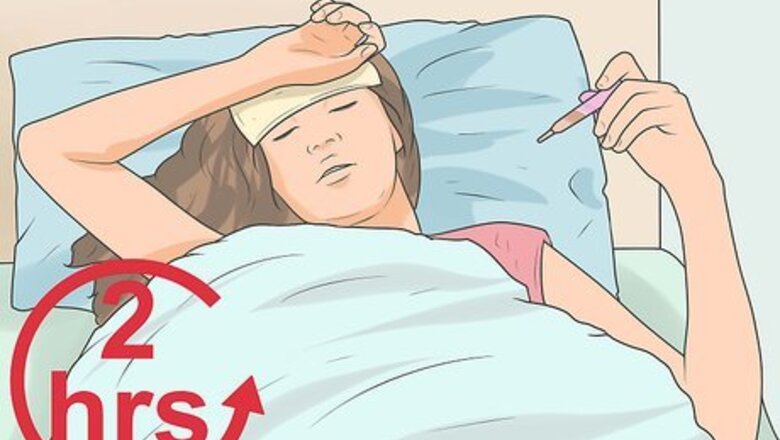
views
X
Trustworthy Source
Cleveland Clinic
Educational website from one of the world's leading hospitals
Go to source
Most fevers break on their own naturally, but reducing dangerously high fevers may help prevent serious complications such as brain damage. Fevers can be lowered with home remedies and medications.
Reducing a Fever Naturally
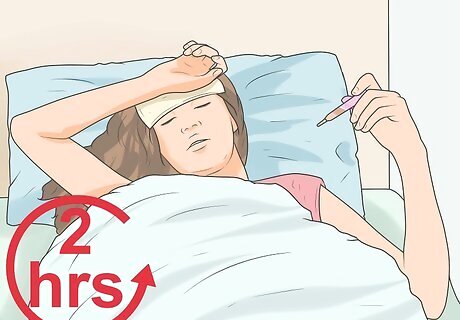
Be patient and monitor the temperature. The vast majority of fevers in children and adults are self-limiting, and usually disappear within two to three days. Therefore, you should be patient with mild-to-moderate fevers for a few days (because they are beneficial) and monitor the temperature every couple of hours or so to make sure the fever doesn't get dangerously high. For infants and toddlers, it's best to take rectal readings. Fevers that last for a week or more are reason for concern, as are high temperatures (over 103°F or 39.4°C in adults and over 101°F or 38.3°C in kids). Keep in mind that body temperature is usually highest in the evening and after physical activity. Menstruation, feeling strong emotions and being in a hot and humid environment also raise the core body temperature temporarily. In addition to sweating, other symptoms associated with mild-to-moderate fevers include: muscle aches, general weakness, fatigue, shivering, headache, loss of appetite and flushed face. Additional symptoms associated with high fevers include: hallucinations, confusion, irritability, convulsions, and potential loss of consciousness (coma). While waiting out a mild-to-moderate fever, make sure to keep well hydrated. Fevers trigger sweating, which can quickly lead to dehydration without making the effort to drink lots of fluids.
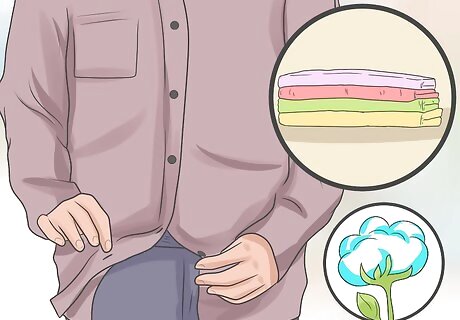
Remove excess clothing or blankets. A simple and common-sense method of reducing a fever is to remove excess clothing during waking hours and excess blankets while in bed. Clothes and blankets insulate our bodies and prevent heat from escaping from our skin. Thus, wear one layer of lightweight clothing and use one lightweight blanket to sleep with while trying to combat a high fever. Avoid clothes and blankets made from synthetic fabrics or wool. Stick with cotton fabrics instead because they breathe better. Remember that your head and feet are capable of losing a lot of heat, so try not to cover your head with hats or your feet with thick socks while fighting a high fever. Don't bundle up someone who develops the chills from a fever because they can get over-heated quickly.
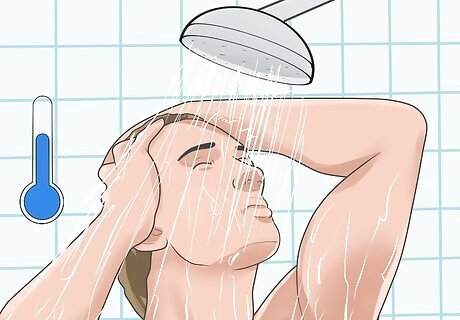
Take a cool bath or shower. If you or your child develops a high fever with the associated symptoms (see above), then take action to lower the body temperature by taking a cool bath or shower. However, it's important not to use cold water, ice or alcohol solution because it often makes the situation worse by triggering shivering, which then tends to raise the core body temperature even more. Stick to tepid or cool water and bathe for about 10 to 15 minutes. Taking a bath may be easier than a shower if you are tired, weak and achy. As an alternative, grab a clean cloth or sponge, soak it in cool water, wring it out, and apply it to the forehead as a cold compress. Change it every 20 minutes until the fever comes down. Another good idea is using a spray bottle filled with chilled distilled water to spritzer (spray) yourself every 30 minutes or so in order to cool down. Focus on spraying your face, neck and upper chest for best results.
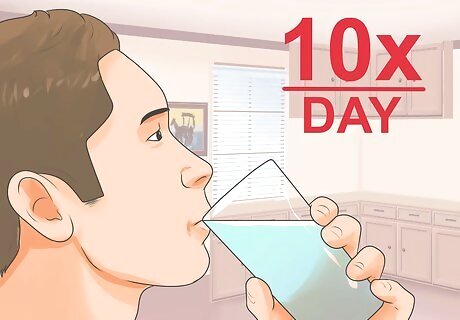
Keep well hydrated. Keeping well hydrated is always important, but it becomes even more so with a fever because you lose more water via perspiration. Aim to increase your water consumption by at least 25%. So if you're used to drinking eight large glasses of purified water daily (the recommended amount for optimal health), increase it to 10 glasses if you have a fever. Drink cool beverages with ice added to try and bring a fever down. Natural fruit / vegetable juice is a good idea because it contains sodium (an electrolyte), which is lost during sweating. Avoid alcoholic and caffeinated beverages as they can flush the skin and make a person feel warmer. For fevers without noticeable perspiration, consider consuming warmer beverages (such as herbal tea) and foods (such as chicken soup) to trigger sweating — it leads to evaporative cooling of the body.
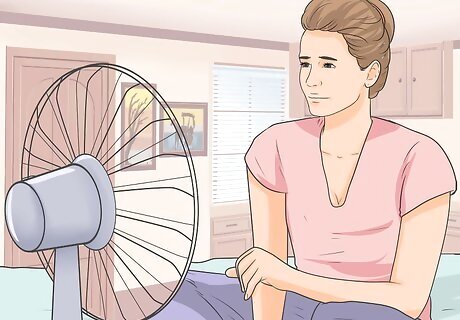
Sit or lay near a fan. The more air that circulates around your body and over your sweaty skin, the more effective the evaporative cooling process is. That's why we sweat in the first place, so that our skin and surface blood vessels cool down as the ambient air evaporates the moisture. Being near a fan simply speeds this process up. Therefore, sit and sleep next to an oscillating fan to help bring down a fever, although make sure enough skin is exposed to be effective. Don't be so close to a fan or have it turned up so high that it causes chills, as shivering and the resulting goose bumps acts to increase the core body temperature. Air conditioning may be the best idea for a hot and humid room, but a mechanical fan is usually a better choice because it’s less likely to make the room too cold after a while.
Reducing a Fever with Medical Intervention
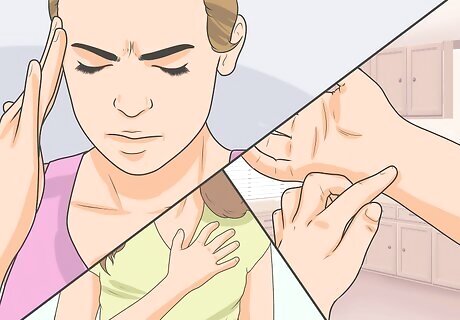
Know when to see your doctor. Most fevers are beneficial and shouldn't be artificially reduced or suppressed, but sometimes it's necessary to prevent serious complications, such as a febrile seizures, coma or brain damage. To best understand how to treat a fever, make an appointment with your doctor if it doesn't go away within a week or if the temperature is considered high (see above). Your doctor has all the instruments necessary to take a temperature reading in the most appropriate area — either orally, rectally, under the armpit or in the ear canal. It's time to take your feverish child to the doctor if they have a high fever (>101°F or 38.3°C) and are: listless, irritable, vomiting, makes poor eye contact, appears very sleepy most of the time and/or has completely lost their appetite. Keep in mind that since children are smaller and growing, they might become seriously dehydrated sooner if a fever continues more than a couple days. Adults should see their doctor if they develop a high fever (>103°F or 39.4°C) and any of the following: severe headache, throat swelling, bad skin rash, light sensitivity, stiff neck, confusion, irritability, chest pain, abdominal pain, constant vomiting, numbness and tingling in limbs and/or seizures. If the high fever is caused by a bacterial infection, then your doctor may recommend antibiotics first in order to control or eliminate the infection.
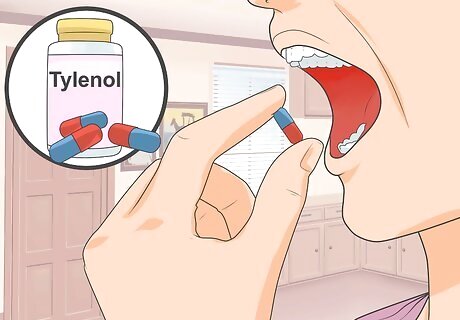
Consider taking acetaminophen (Tylenol). Acetaminophen is not only a painkiller (analgesic), but it's also a strong antipyretic, which means it can trigger the hypothalamus in the brain to lower body temperature. In other words, it works by turning down your brain's thermostat. Acetaminophen is typically best and safest for young children with high fevers (using the weight-appropriate dosage recommendations on the box) and also helpful for teenagers and adults. For a high fever, it's recommended to take a dose of acetaminophen every 4 to 6 hours. For adults, the maximum recommended daily dose of acetaminophen is 3,000 mg. Taking too much acetaminophen or taking it for too long can be toxic and damaging to the liver. Pay attention to the ingredients in other medications as well. For example, cold medicine can include acetaminophen. Alcohol should never be combined with acetaminophen.
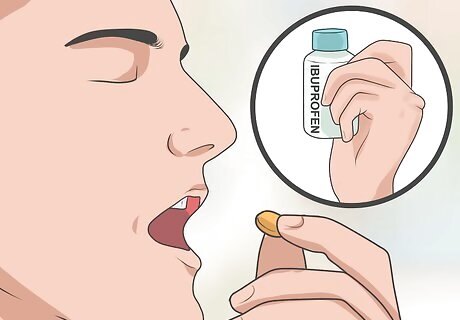
Try ibuprofen (Advil, Motrin) instead. Ibuprofen is also a good antipyretic — in fact, in some studies it's more effective than acetaminophen at reducing fever in children aged between 2 to 12 years. The main issue is that it's typically not recommended for children younger than 2 years (especially infants younger than 6 months) because of potential serious side effects. Ibuprofen is also a good anti-inflammatory (unlike acetaminophen), which can be helpful if you or your child also experience muscle / joint aches with the fever. For adults, between 400-600 mg can be taken every 6 hours for reducing high fevers. Child doses are typically half that, but it depends on their weight and other health factors, so ask your doctor. Taking too much ibuprofen or taking it for too long can be irritating and damaging to the stomach and kidneys, so take the medication with food. In fact, stomach ulcers and kidney failure are the most serious side effects. Furthermore, alcohol should never be combined with ibuprofen.
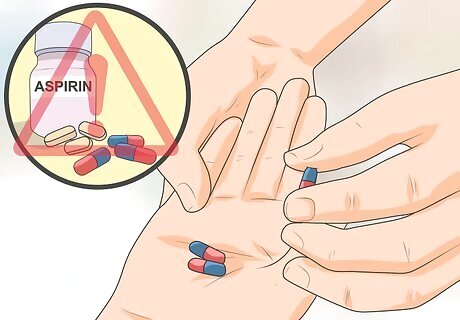
Be cautious with aspirin. Aspirin is a good anti-inflammatory and strong antipyretic and is very effective for treating high fevers in adults. However, aspirin is more toxic than either acetaminophen or ibuprofen is, particularly to children. As such, aspirin should not be used for fever reduction or any other condition in children or adolescents, especially those experiencing or recovering from viral illness such as the chickenpox or flu — it's linked to Reye's syndrome, an allergic reaction involving prolonged vomiting, confusion, liver failure and brain damage. Aspirin (Anacin, Bayer, Bufferin) is particularly irritating to the lining of the stomach and a significant cause of stomach ulcers in the United States and Canada. Always take aspirin on a full stomach. Maximum adult daily dosage of aspirin is 4,000 mg. Exceeding this amount may cause an upset stomach, ringing in the ears, dizziness and blurred vision.


















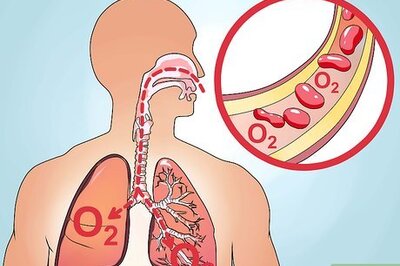

Comments
0 comment